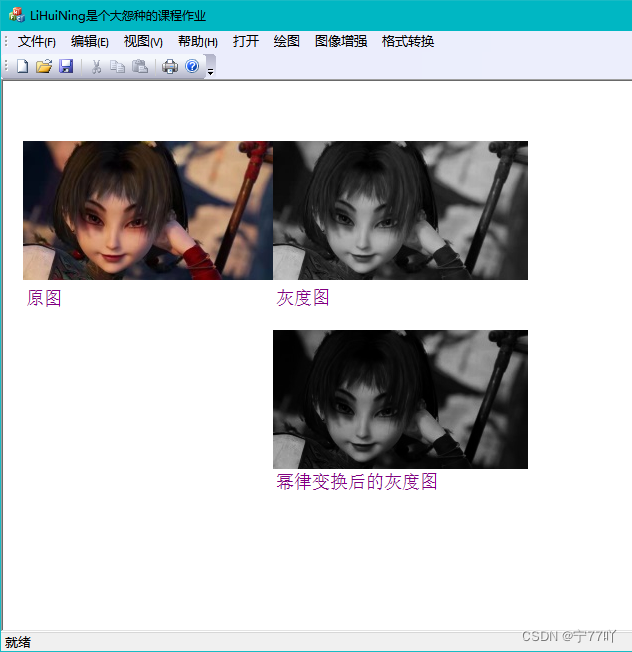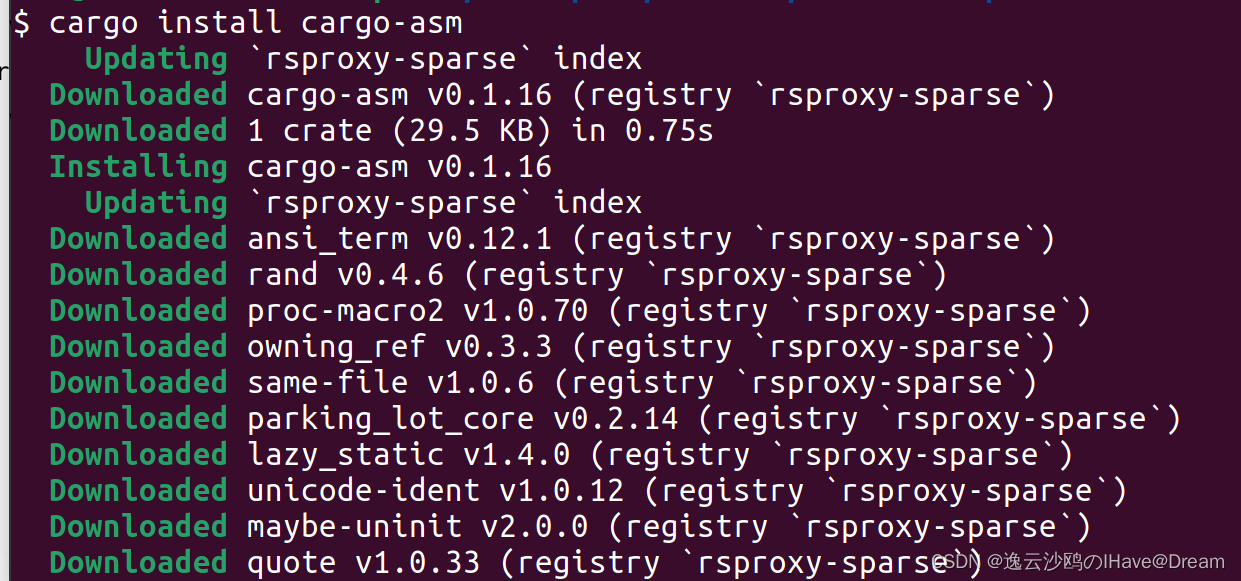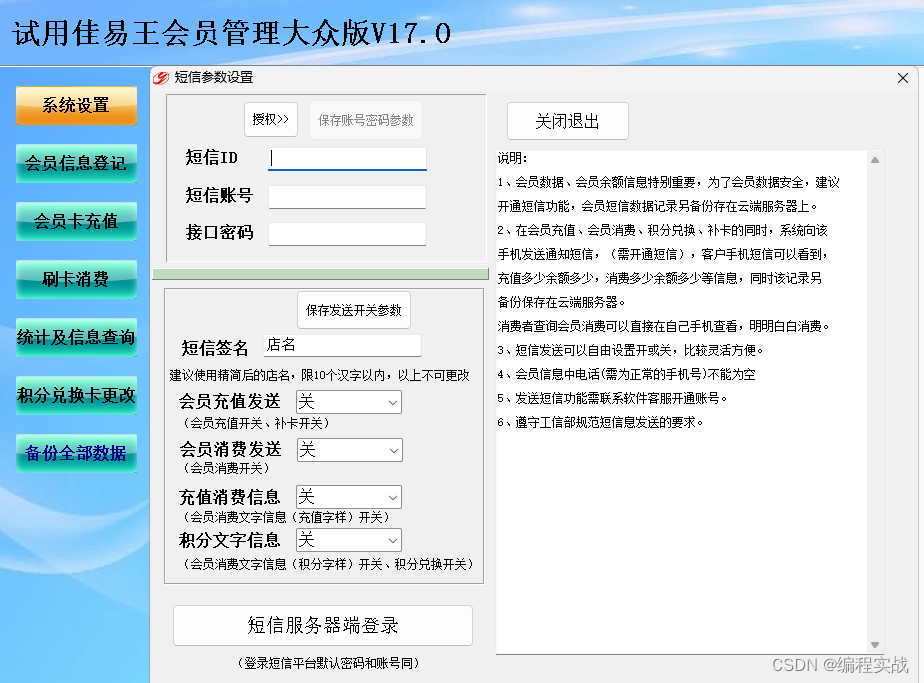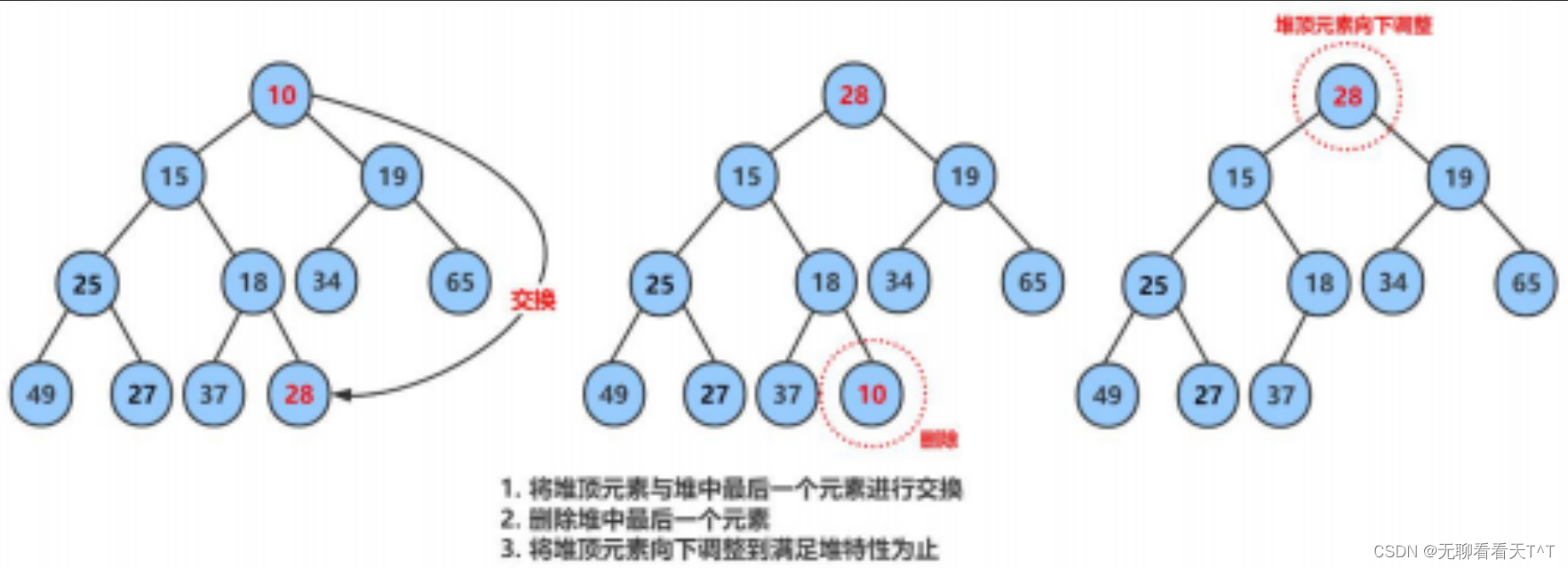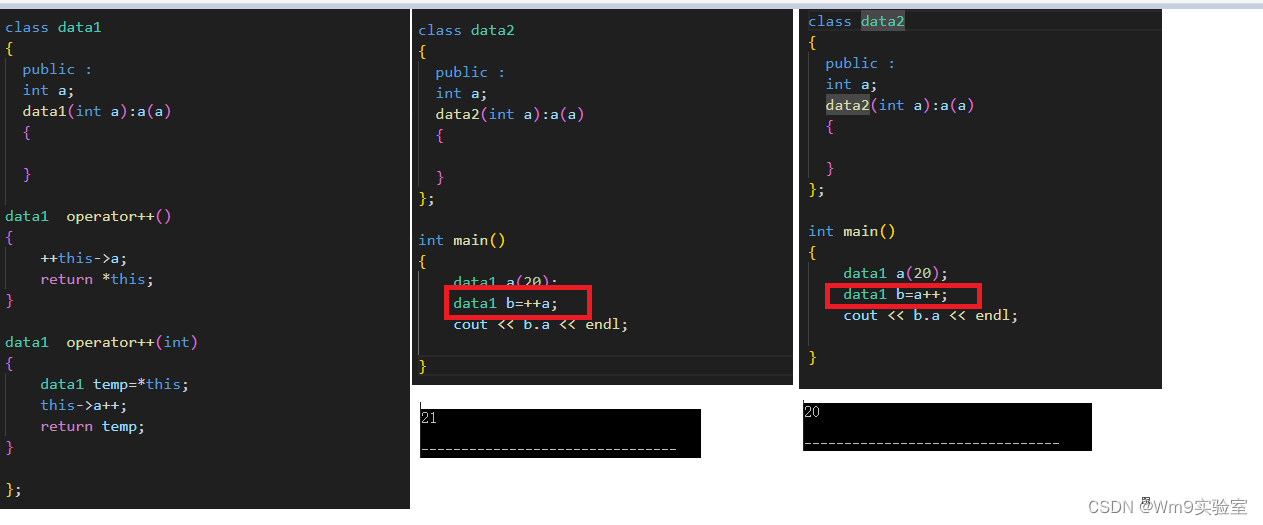
1 文本格式
// A C program to implement Ukkonen's Suffix Tree Construction
// And then build generalized suffix tree
#include <stdio.h>
#include <string.h>
#include <stdlib.h>
#define MAX_CHAR 256
struct SuffixTreeNode {
struct SuffixTreeNode *children[MAX_CHAR];
//pointer to other node via suffix link
struct SuffixTreeNode *suffixLink;
/*(start, end) interval specifies the edge, by which the
node is connected to its parent node. Each edge will
connect two nodes, one parent and one child, and
(start, end) interval of a given edge will be stored
in the child node. Lets say there are two nods A and B
connected by an edge with indices (5, 8) then this
indices (5, 8) will be stored in node B. */
int start;
int *end;
/*for leaf nodes, it stores the index of suffix for
the path from root to leaf*/
int suffixIndex;
};
typedef struct SuffixTreeNode Node;
char text[100]; //Input string
Node *root = NULL; //Pointer to root node
/*lastNewNode will point to newly created internal node,
waiting for it's suffix link to be set, which might get
a new suffix link (other than root) in next extension of
same phase. lastNewNode will be set to NULL when last
newly created internal node (if there is any) got it's
suffix link reset to new internal node created in next
extension of same phase. */
Node *lastNewNode = NULL;
Node *activeNode = NULL;
/*activeEdge is represented as input string character
index (not the character itself)*/
int activeEdge = -1;
int activeLength = 0;
// remainingSuffixCount tells how many suffixes yet to
// be added in tree
int remainingSuffixCount = 0;
int leafEnd = -1;
int *rootEnd = NULL;
int *splitEnd = NULL;
int size = -1; //Length of input string
Node *newNode(int start, int *end)
{
Node *node =(Node*) malloc(sizeof(Node));
int i;
for (i = 0; i < MAX_CHAR; i++)
node->children[i] = NULL;
/*For root node, suffixLink will be set to NULL
For internal nodes, suffixLink will be set to root
by default in current extension and may change in
next extension*/
node->suffixLink = root;
node->start = start;
node->end = end;
/*suffixIndex will be set to -1 by default and
actual suffix index will be set later for leaves
at the end of all phases*/
node->suffixIndex = -1;
return node;
}
int edgeLength(Node *n) {
if(n == root)
return 0;
return *(n->end) - (n->start) + 1;
}
int walkDown(Node *currNode)
{
/*activePoint change for walk down (APCFWD) using
Skip/Count Trick (Trick 1). If activeLength is greater
than current edge length, set next internal node as
activeNode and adjust activeEdge and activeLength
accordingly to represent same activePoint*/
if (activeLength >= edgeLength(currNode))
{
activeEdge += edgeLength(currNode);
activeLength -= edgeLength(currNode);
activeNode = currNode;
return 1;
}
return 0;
}
void extendSuffixTree(int pos)
{
/*Extension Rule 1, this takes care of extending all
leaves created so far in tree*/
leafEnd = pos;
/*Increment remainingSuffixCount indicating that a
new suffix added to the list of suffixes yet to be
added in tree*/
remainingSuffixCount++;
/*set lastNewNode to NULL while starting a new phase,
indicating there is no internal node waiting for
it's suffix link reset in current phase*/
lastNewNode = NULL;
//Add all suffixes (yet to be added) one by one in tree
while(remainingSuffixCount > 0) {
if (activeLength == 0)
activeEdge = pos; //APCFALZ
// There is no outgoing edge starting with
// activeEdge from activeNode
if (activeNode->children] == NULL)
{
//Extension Rule 2 (A new leaf edge gets created)
activeNode->children] =
newNode(pos, &leafEnd);
/*A new leaf edge is created in above line starting
from an existing node (the current activeNode), and
if there is any internal node waiting for it's suffix
link get reset, point the suffix link from that last
internal node to current activeNode. Then set lastNewNode
to NULL indicating no more node waiting for suffix link
reset.*/
if (lastNewNode != NULL)
{
lastNewNode->suffixLink = activeNode;
lastNewNode = NULL;
}
}
// There is an outgoing edge starting with activeEdge
// from activeNode
else
{
// Get the next node at the end of edge starting
// with activeEdge
Node *next = activeNode->children];
if (walkDown(next))//Do walkdown
{
//Start from next node (the new activeNode)
continue;
}
/*Extension Rule 3 (current character being processed
is already on the edge)*/
if (text[next->start + activeLength] == text[pos])
{
//If a newly created node waiting for it's
//suffix link to be set, then set suffix link
//of that waiting node to current active node
if(lastNewNode != NULL && activeNode != root)
{
lastNewNode->suffixLink = activeNode;
lastNewNode = NULL;
}
//APCFER3
activeLength++;
/*STOP all further processing in this phase
and move on to next phase*/
break;
}
/*We will be here when activePoint is in middle of
the edge being traversed and current character
being processed is not on the edge (we fall off
the tree). In this case, we add a new internal node
and a new leaf edge going out of that new node. This
is Extension Rule 2, where a new leaf edge and a new
internal node get created*/
splitEnd = (int*) malloc(sizeof(int));
*splitEnd = next->start + activeLength - 1;
//New internal node
Node *split = newNode(next->start, splitEnd);
activeNode->children] = split;
//New leaf coming out of new internal node
split->children] = newNode(pos, &leafEnd);
next->start += activeLength;
split->children] = next;
/*We got a new internal node here. If there is any
internal node created in last extensions of same
phase which is still waiting for it's suffix link
reset, do it now.*/
if (lastNewNode != NULL)
{
/*suffixLink of lastNewNode points to current newly
created internal node*/
lastNewNode->suffixLink = split;
}
/*Make the current newly created internal node waiting
for it's suffix link reset (which is pointing to root
at present). If we come across any other internal node
(existing or newly created) in next extension of same
phase, when a new leaf edge gets added (i.e. when
Extension Rule 2 applies is any of the next extension
of same phase) at that point, suffixLink of this node
will point to that internal node.*/
lastNewNode = split;
}
/* One suffix got added in tree, decrement the count of
suffixes yet to be added.*/
remainingSuffixCount--;
if (activeNode == root && activeLength > 0) //APCFER2C1
{
activeLength--;
activeEdge = pos - remainingSuffixCount + 1;
}
else if (activeNode != root) //APCFER2C2
{
activeNode = activeNode->suffixLink;
}
}
}
void print(int i, int j)
{
int k;
for (k=i; k<=j && text[k] != '#'; k++)
printf("%c", text[k]);
if(k<=j)
printf("#");
}
//Print the suffix tree as well along with setting suffix index
//So tree will be printed in DFS manner
//Each edge along with it's suffix index will be printed
void setSuffixIndexByDFS(Node *n, int labelHeight)
{
if (n == NULL) return;
if (n->start != -1) //A non-root node
{
//Print the label on edge from parent to current node
print(n->start, *(n->end));
}
int leaf = 1;
int i;
for (i = 0; i < MAX_CHAR; i++)
{
if (n->children[i] != NULL)
{
if (leaf == 1 && n->start != -1)
printf(" [%d]\n", n->suffixIndex);
//Current node is not a leaf as it has outgoing
//edges from it.
leaf = 0;
setSuffixIndexByDFS(n->children[i], labelHeight +
edgeLength(n->children[i]));
}
}
if (leaf == 1)
{
for(i= n->start; i<= *(n->end); i++)
{
if(text[i] == '#') //Trim unwanted characters
{
n->end = (int*) malloc(sizeof(int));
*(n->end) = i;
}
}
n->suffixIndex = size - labelHeight;
printf(" [%d]\n", n->suffixIndex);
}
}
void freeSuffixTreeByPostOrder(Node *n)
{
if (n == NULL)
return;
int i;
for (i = 0; i < MAX_CHAR; i++)
{
if (n->children[i] != NULL)
{
freeSuffixTreeByPostOrder(n->children[i]);
}
}
if (n->suffixIndex == -1)
free(n->end);
free(n);
}
/*Build the suffix tree and print the edge labels along with
suffixIndex. suffixIndex for leaf edges will be >= 0 and
for non-leaf edges will be -1*/
void buildSuffixTree()
{
size = strlen(text);
int i;
rootEnd = (int*) malloc(sizeof(int));
*rootEnd = - 1;
/*Root is a special node with start and end indices as -1,
as it has no parent from where an edge comes to root*/
root = newNode(-1, rootEnd);
activeNode = root; //First activeNode will be root
for (i=0; i<size; i++)
extendSuffixTree(i);
int labelHeight = 0;
setSuffixIndexByDFS(root, labelHeight);
//Free the dynamically allocated memory
freeSuffixTreeByPostOrder(root);
}
// driver program to test above functions
int main(int argc, char *argv[])
{
// strcpy(text, "xabxac#abcabxabcd$"); buildSuffixTree();
strcpy(text, "xabxa#babxba$"); buildSuffixTree();
return 0;
}
2 代码格式
// A C program to implement Ukkonen's Suffix Tree Construction
// And then build generalized suffix tree
#include <stdio.h>
#include <string.h>
#include <stdlib.h>
#define MAX_CHAR 256
struct SuffixTreeNode {
struct SuffixTreeNode *children[MAX_CHAR];
//pointer to other node via suffix link
struct SuffixTreeNode *suffixLink;
/*(start, end) interval specifies the edge, by which the
node is connected to its parent node. Each edge will
connect two nodes, one parent and one child, and
(start, end) interval of a given edge will be stored
in the child node. Lets say there are two nods A and B
connected by an edge with indices (5, 8) then this
indices (5, 8) will be stored in node B. */
int start;
int *end;
/*for leaf nodes, it stores the index of suffix for
the path from root to leaf*/
int suffixIndex;
};
typedef struct SuffixTreeNode Node;
char text[100]; //Input string
Node *root = NULL; //Pointer to root node
/*lastNewNode will point to newly created internal node,
waiting for it's suffix link to be set, which might get
a new suffix link (other than root) in next extension of
same phase. lastNewNode will be set to NULL when last
newly created internal node (if there is any) got it's
suffix link reset to new internal node created in next
extension of same phase. */
Node *lastNewNode = NULL;
Node *activeNode = NULL;
/*activeEdge is represented as input string character
index (not the character itself)*/
int activeEdge = -1;
int activeLength = 0;
// remainingSuffixCount tells how many suffixes yet to
// be added in tree
int remainingSuffixCount = 0;
int leafEnd = -1;
int *rootEnd = NULL;
int *splitEnd = NULL;
int size = -1; //Length of input string
Node *newNode(int start, int *end)
{
Node *node =(Node*) malloc(sizeof(Node));
int i;
for (i = 0; i < MAX_CHAR; i++)
node->children[i] = NULL;
/*For root node, suffixLink will be set to NULL
For internal nodes, suffixLink will be set to root
by default in current extension and may change in
next extension*/
node->suffixLink = root;
node->start = start;
node->end = end;
/*suffixIndex will be set to -1 by default and
actual suffix index will be set later for leaves
at the end of all phases*/
node->suffixIndex = -1;
return node;
}
int edgeLength(Node *n) {
if(n == root)
return 0;
return *(n->end) - (n->start) + 1;
}
int walkDown(Node *currNode)
{
/*activePoint change for walk down (APCFWD) using
Skip/Count Trick (Trick 1). If activeLength is greater
than current edge length, set next internal node as
activeNode and adjust activeEdge and activeLength
accordingly to represent same activePoint*/
if (activeLength >= edgeLength(currNode))
{
activeEdge += edgeLength(currNode);
activeLength -= edgeLength(currNode);
activeNode = currNode;
return 1;
}
return 0;
}
void extendSuffixTree(int pos)
{
/*Extension Rule 1, this takes care of extending all
leaves created so far in tree*/
leafEnd = pos;
/*Increment remainingSuffixCount indicating that a
new suffix added to the list of suffixes yet to be
added in tree*/
remainingSuffixCount++;
/*set lastNewNode to NULL while starting a new phase,
indicating there is no internal node waiting for
it's suffix link reset in current phase*/
lastNewNode = NULL;
//Add all suffixes (yet to be added) one by one in tree
while(remainingSuffixCount > 0) {
if (activeLength == 0)
activeEdge = pos; //APCFALZ
// There is no outgoing edge starting with
// activeEdge from activeNode
if (activeNode->children] == NULL)
{
//Extension Rule 2 (A new leaf edge gets created)
activeNode->children] =
newNode(pos, &leafEnd);
/*A new leaf edge is created in above line starting
from an existing node (the current activeNode), and
if there is any internal node waiting for it's suffix
link get reset, point the suffix link from that last
internal node to current activeNode. Then set lastNewNode
to NULL indicating no more node waiting for suffix link
reset.*/
if (lastNewNode != NULL)
{
lastNewNode->suffixLink = activeNode;
lastNewNode = NULL;
}
}
// There is an outgoing edge starting with activeEdge
// from activeNode
else
{
// Get the next node at the end of edge starting
// with activeEdge
Node *next = activeNode->children];
if (walkDown(next))//Do walkdown
{
//Start from next node (the new activeNode)
continue;
}
/*Extension Rule 3 (current character being processed
is already on the edge)*/
if (text[next->start + activeLength] == text[pos])
{
//If a newly created node waiting for it's
//suffix link to be set, then set suffix link
//of that waiting node to current active node
if(lastNewNode != NULL && activeNode != root)
{
lastNewNode->suffixLink = activeNode;
lastNewNode = NULL;
}
//APCFER3
activeLength++;
/*STOP all further processing in this phase
and move on to next phase*/
break;
}
/*We will be here when activePoint is in middle of
the edge being traversed and current character
being processed is not on the edge (we fall off
the tree). In this case, we add a new internal node
and a new leaf edge going out of that new node. This
is Extension Rule 2, where a new leaf edge and a new
internal node get created*/
splitEnd = (int*) malloc(sizeof(int));
*splitEnd = next->start + activeLength - 1;
//New internal node
Node *split = newNode(next->start, splitEnd);
activeNode->children] = split;
//New leaf coming out of new internal node
split->children] = newNode(pos, &leafEnd);
next->start += activeLength;
split->children] = next;
/*We got a new internal node here. If there is any
internal node created in last extensions of same
phase which is still waiting for it's suffix link
reset, do it now.*/
if (lastNewNode != NULL)
{
/*suffixLink of lastNewNode points to current newly
created internal node*/
lastNewNode->suffixLink = split;
}
/*Make the current newly created internal node waiting
for it's suffix link reset (which is pointing to root
at present). If we come across any other internal node
(existing or newly created) in next extension of same
phase, when a new leaf edge gets added (i.e. when
Extension Rule 2 applies is any of the next extension
of same phase) at that point, suffixLink of this node
will point to that internal node.*/
lastNewNode = split;
}
/* One suffix got added in tree, decrement the count of
suffixes yet to be added.*/
remainingSuffixCount--;
if (activeNode == root && activeLength > 0) //APCFER2C1
{
activeLength--;
activeEdge = pos - remainingSuffixCount + 1;
}
else if (activeNode != root) //APCFER2C2
{
activeNode = activeNode->suffixLink;
}
}
}
void print(int i, int j)
{
int k;
for (k=i; k<=j && text[k] != '#'; k++)
printf("%c", text[k]);
if(k<=j)
printf("#");
}
//Print the suffix tree as well along with setting suffix index
//So tree will be printed in DFS manner
//Each edge along with it's suffix index will be printed
void setSuffixIndexByDFS(Node *n, int labelHeight)
{
if (n == NULL) return;
if (n->start != -1) //A non-root node
{
//Print the label on edge from parent to current node
print(n->start, *(n->end));
}
int leaf = 1;
int i;
for (i = 0; i < MAX_CHAR; i++)
{
if (n->children[i] != NULL)
{
if (leaf == 1 && n->start != -1)
printf(" [%d]\n", n->suffixIndex);
//Current node is not a leaf as it has outgoing
//edges from it.
leaf = 0;
setSuffixIndexByDFS(n->children[i], labelHeight +
edgeLength(n->children[i]));
}
}
if (leaf == 1)
{
for(i= n->start; i<= *(n->end); i++)
{
if(text[i] == '#') //Trim unwanted characters
{
n->end = (int*) malloc(sizeof(int));
*(n->end) = i;
}
}
n->suffixIndex = size - labelHeight;
printf(" [%d]\n", n->suffixIndex);
}
}
void freeSuffixTreeByPostOrder(Node *n)
{
if (n == NULL)
return;
int i;
for (i = 0; i < MAX_CHAR; i++)
{
if (n->children[i] != NULL)
{
freeSuffixTreeByPostOrder(n->children[i]);
}
}
if (n->suffixIndex == -1)
free(n->end);
free(n);
}
/*Build the suffix tree and print the edge labels along with
suffixIndex. suffixIndex for leaf edges will be >= 0 and
for non-leaf edges will be -1*/
void buildSuffixTree()
{
size = strlen(text);
int i;
rootEnd = (int*) malloc(sizeof(int));
*rootEnd = - 1;
/*Root is a special node with start and end indices as -1,
as it has no parent from where an edge comes to root*/
root = newNode(-1, rootEnd);
activeNode = root; //First activeNode will be root
for (i=0; i<size; i++)
extendSuffixTree(i);
int labelHeight = 0;
setSuffixIndexByDFS(root, labelHeight);
//Free the dynamically allocated memory
freeSuffixTreeByPostOrder(root);
}
// driver program to test above functions
int main(int argc, char *argv[])
{
// strcpy(text, "xabxac#abcabxabcd$"); buildSuffixTree();
strcpy(text, "xabxa#babxba$"); buildSuffixTree();
return 0;
}

![[数据结构]HashSet与LinkedHashSet的底层原理学习心得](https://img-blog.csdnimg.cn/direct/0c29c4f2e0644eb1858de0ccc533ab7d.png)

